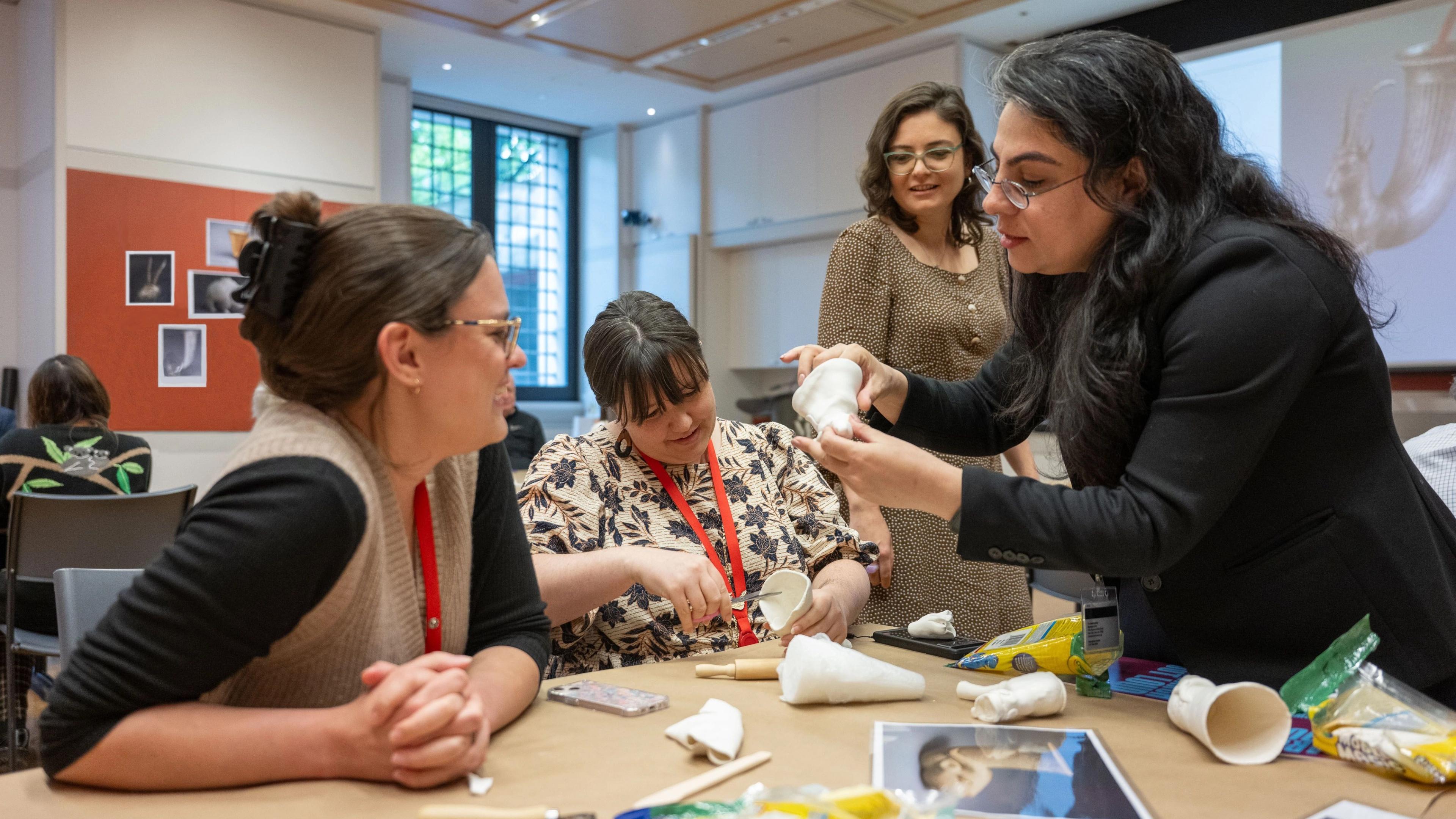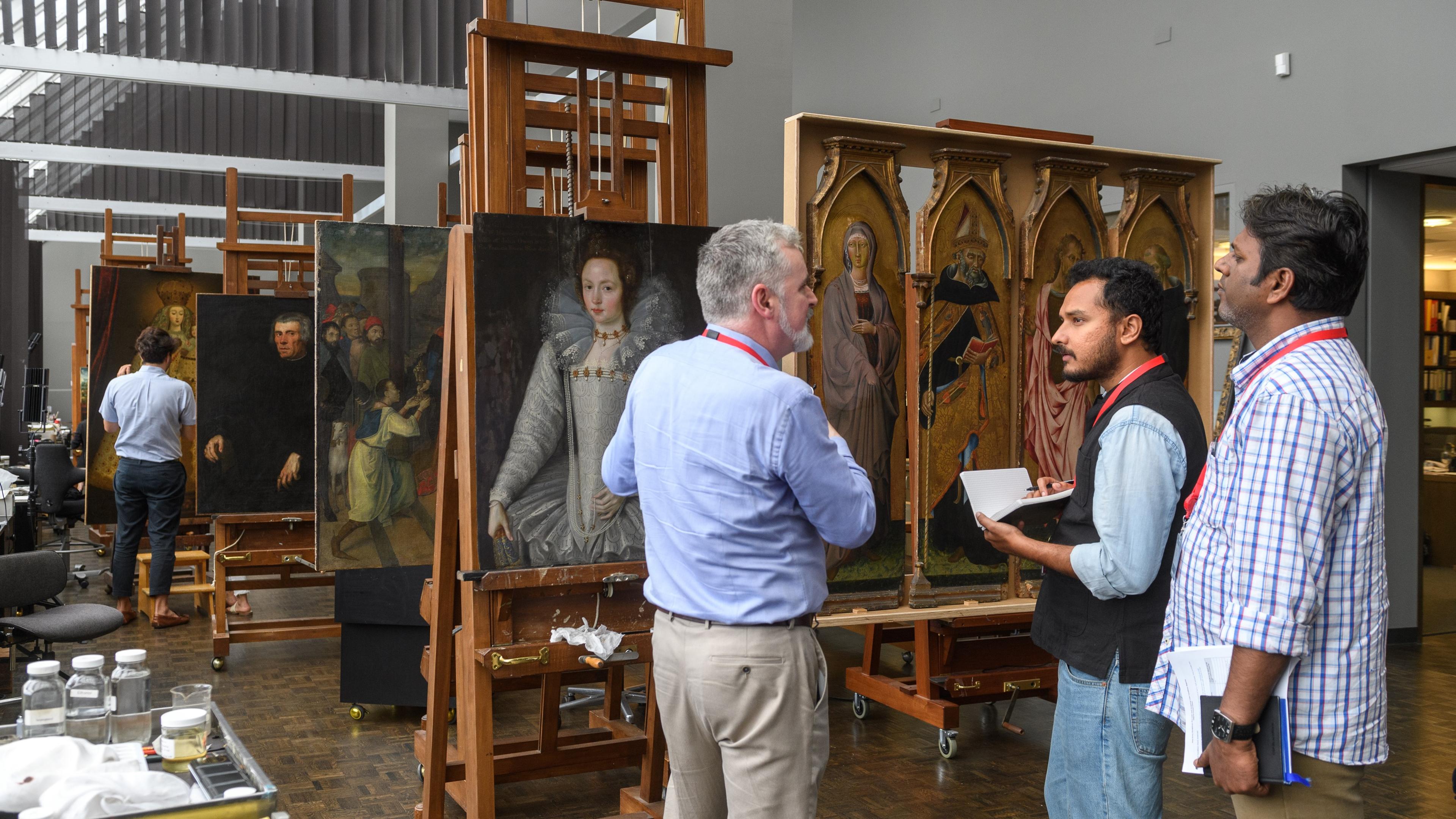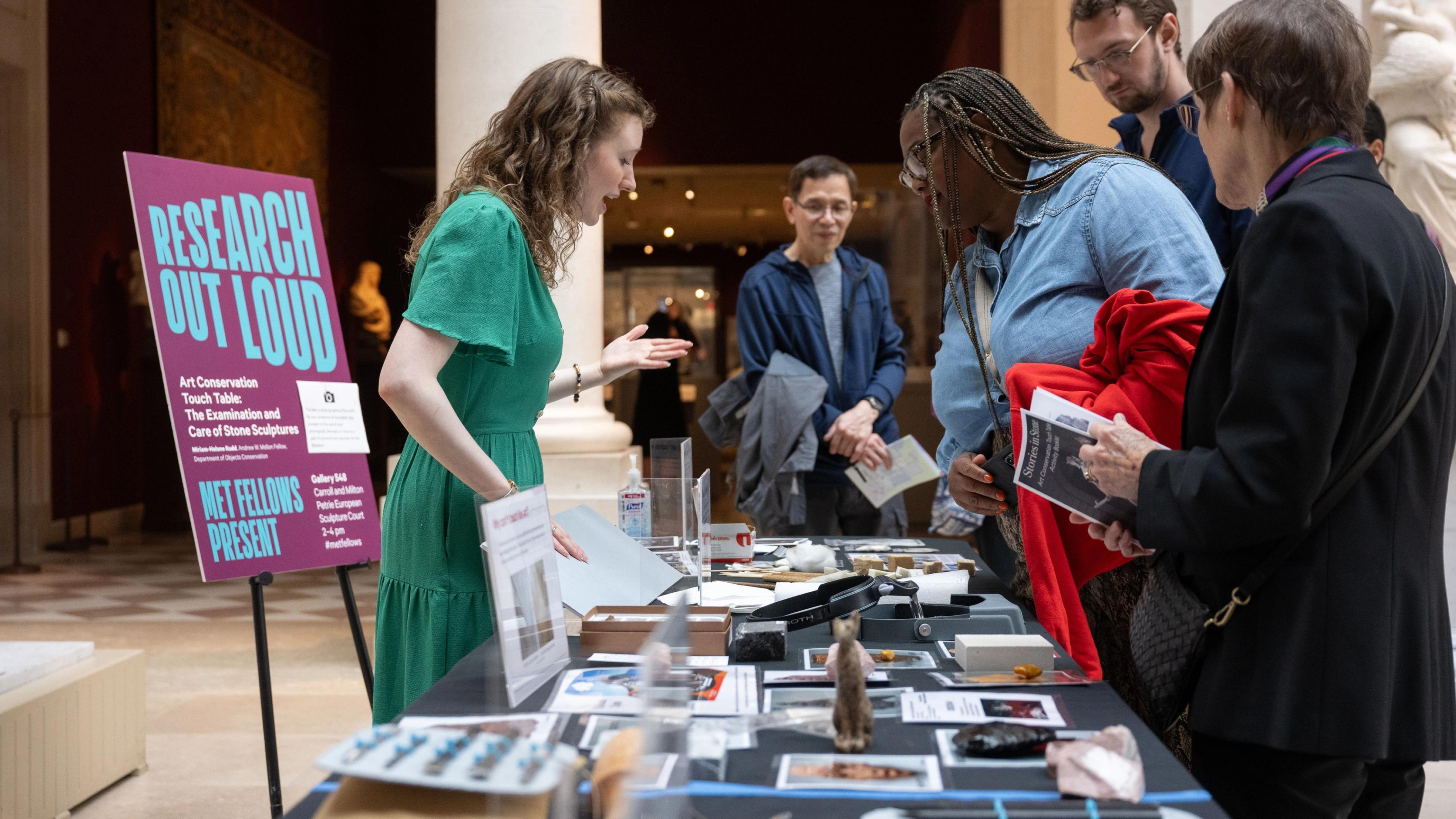Conservation and Scientific Research Fellowship
About the Fellowship
Conservators and scientists work in close collaboration with curators to study, preserve, and conserve works of art across The Met collection. The Met is home to a world-renowned network of conservation facilities, designed to meet the complex needs of its holdings. The Museum welcomes fellowship applications from junior and senior conservators and scientists to pursue advanced training and independent research projects.
Fellows are paired with a supervisor or primary contact within their host department to guide them as they navigate our extensive resources. Fellows have access to The Met collection, staff, libraries, research facilities, labs, and the time and space needed to complete their manuscripts, doctoral dissertations, scholarly articles, conservation training, research experiments, and other pursuits.
Learn more about our Conservation and Scientific Research departments.
See a list of the Department of Scientific Research's primary areas of research interest.
- MA graduates, PhD candidates, postdoctoral scholars, and senior scientists and researchers are eligible to apply. Junior fellows are those applicants who have recently completed graduate-level training, such as a master’s degree, or who are currently pursuing a PhD. Applicants for junior fellowships must have an MA in-hand by the application deadline date.
- Junior fellows are those applicants who have recently completed graduate-level training, such as a master’s degree, or who are currently pursuing a PhD. Applicants who receive their PhD after the submission deadline are not eligible for the senior fellowship.
- Senior fellows are well-established professionals with at least eight years of experience in the field with a proven publication record, or those who already hold a PhD by the application deadline date.
- All fellows are expected to have valid US work authorization for the entire duration of the fellowship. If you are not a US citizen or permanent resident, please review the additional details in the Fellowship Application FAQs, and ensure you have confirmed your eligibility prior to submitting an application.
Stipend
- Junior fellows receive a stipend of $47,000.
- Senior fellows receive a stipend of $57,000.
Travel: Both junior and senior fellows receive an additional $6,000 for travel (maximum of six weeks).
Health insurance: Fellows also receive an additional monthly payment to offset the cost of health insurance.
Application deadline: Friday, November 14, 2025, 5 pm ET
Notification date: All applicants will be notified by the last Friday in February following the application deadline.
Fellowship period: September 1, 2026 through August 31, 2027
All applications, including letters of recommendation, must be submitted online and in English. The Met will not accept applications or related materials via email, postal mail, or in person.
All Conservation and Scientific Research applicants must submit (as .doc or .pdf files):
- A curriculum vitae of education, professional experience, honors, awards, and publications
- Three letters of recommendation. At least one must be from an academic reference, and one from a professional reference. All letters must be submitted in English and uploaded directly by the recommenders. Recommenders may not be current Met staff, contractors, or volunteers.
- Official transcripts (undergraduate and graduate), for predoctoral (junior) fellowship applicants only
If you have not yet completed your PhD, you must upload a copy of your undergraduate transcript and graduate transcript. If you have transcripts from more than one institution for either category (undergraduate or graduate), please upload them as one combined file.
Junior fellowship applicants must also include:
- A statement of interest and intent, not to exceed 1,000 words, describing why The Met is uniquely suited to your fellowship objectives, what you expect to accomplish during the fellowship period, and how you will utilize the Museum's resources and The Met collection to achieve your goal.
Senior fellowship applicants must also include:
- A project proposal, not to exceed 1,000 words, describing why The Met is uniquely suited to your fellowship objectives, what you expect to accomplish during the fellowship period, and how you will utilize the Museum's resources and The Met collection to achieve your goal.
- A brief schedule of work to be accomplished during the fellowship period and, if you are proposing a fellowship period shorter than one year, your proposed starting and ending dates (separate from the project proposal).
Paper Conservation applicants (junior or senior) must also include:
- Two treatment reports and associated documentation with explanations justifying the reason for treatment and decisions entering each stage of treatment (not to exceed 750 words per object).
What to Expect After Applying
Once submitted, staff in relevant department(s) first review your application to assess the quality and feasibility of your application according to the criteria set forth on the evaluation rubric. If your proposal meets the necessary criteria, the department(s) recommend it for review by The Met’s Grants Committee, which consists of members of The Met’s professional staff appointed by the Museum’s Director and Chief Executive Officer. The committee reviews all aspects of each application submitted, using the evaluation rubric (see above). Following this assessment, the Grants Committee submits final award recommendations to the Director and CEO for review and approval. You are notified regarding the result of your application by the last Friday in February.
Please note that due to the lengthy and multiperspective review process, we are unable to provide individual feedback on applications that are not selected.
Selection Criteria
Applications are evaluated based on the criteria set forth in The Met’s evaluation rubric for Conservation and Scientific Research Fellowship applications.
Reviewers consider all your application materials: your personal statement, project proposal, CV, transcripts, and letters of recommendation. They use the rubric to score your application, but the score serves only as a guide. There is no cut-off number for progressing in the review process or being awarded a fellowship.
View a rubric to learn how Conservation and Scientific Research fellowships are assessed.
Life As A Met Fellow

Research Support, Community, and Professional Development
Fellows receive financial support, time for research, exposure to museum work, and access to The Met collection and libraries. Weekly programs and workshops bring fellows together with Met staff to share ideas, develop professional skills, and discuss current issues in museum practice.

Departmental Placement
Fellows are embedded in a curatorial, conservation, audience engagement, or scientific research department with a dedicated Met staff supervisor. Browse curatorial and conservation departments. The Education, Digital, Live Arts, and Archives departments also host Interdisciplinary Fellows.

Research Out Loud: Met Fellows Present
Research Out Loud: Met Fellows Present connects the fellows with the public through a series of gallery programs and research presentations that offer cross-cultural and transhistorical connections throughout The Met collection.